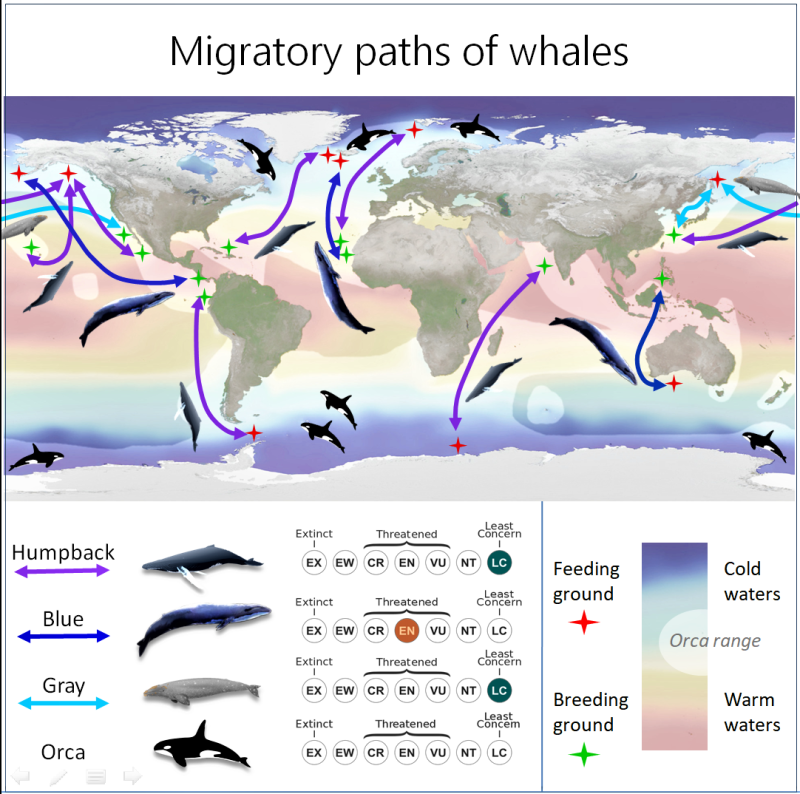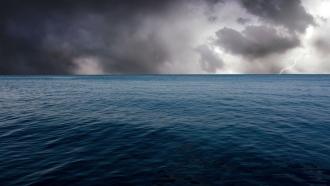
The Hawaiian sun shines brightly over the placid Pacific Ocean. All of a sudden, a fountain of water breaks the surface! Whoosh! First a flipper, and then a gloriously large tail appears and disappears into the blue!
If you are wondering, the tail belongs to a whale -- the largest mammal on the planet. And this the treat everyone is waiting for at the 38th Maui Whale Festival -- a series of events that celebrate the humpback whales that migrate to Maui in Hawaii, USA, every winter. This annual event is organised by the Pacific Whale Foundation to create awareness about these magnificent mammals. But if you are not in Maui, should it stop you from being a part of the celebration and knowing more about these mysterious creatures? We believe, no!
Whales are remarkable not just for their staggering sizes (the blue whale can weigh upto 150 tons), but also for their remarkable migratory abilities. Whale migrations are one of the wonders of the ocean and the longest mammalian migrations ever known! These giants undertake journeys spanning tens of thousands of kilometres, braving ocean currents, ice sheets and endlessly vast expanses of unmarked water.
These aquatic mammals are widely distributed across the globe. They usually feed on plankton, krill, shrimp, small squids and other small marine creatures. Whales are of two types: Odontocetes – toothed whales such as dolphins, orca and sperm whales; and Mysticetes (also called baleen whales) – whales possessing a sieve-like comb to filter their food from the water, such as the humpback, blue and right whales.
What sets them off on their voyage?
Whales overcome seasonal changes in their environment by moving annually with changing ocean conditions and prey densities. Baleen whales swim to poles to feed in the plankton-rich cold waters during summer, and to more tropical, warm waters in winter to give birth. Toothed whales, on the other hand, move seasonally in a north-south direction, or offshore-inshore.
However, it is often found that whales do not necessarily migrate just in search of food. Sometimes, they do so to give birth in waters that are comfortable for the newborn calves. Other times, they migrate to save their calves from predators like killer whales (also called orca). Whatever the drivers may be, whales swim astounding distances with routes criss-crossing ocean basins.
Marine biologists have identified persistent trails from the Gulf of California, the Hawaiian islands and the China Sea, to the Bering and Chukchi Seas; from South Africa, New Zealand, Chile and Argentina to the Southern Ocean and the Antarctic Peninsula; from the Caribbean and the West Coast of Africa to the North Atlantic and the Arctic. Recent advances in photographic identification of individual whales, tagging and genetic capture-recapture studies have revealed that some humpbacks travel distances of about 10000 kilometres, almost twice of what was earlier believed!
The record for the longest migration is held by a female Western North Pacific Gray whale. Tagged in Sakhalin Island, Russia, she went on to reproduce off Baja California in Mexico, and returned to Sakhalin the following spring, covering a whopping 22511 kilometres -- more than half the earth’s circumference!

Whale navigation -- charting the route
Have you ever wondered how these amazing creatures navigate the murky depths of the ocean? Even in deep waters, tagged whales are found to travel long distances in perfect straight lines, indicating excellent navigation abilities. They are able to orient themselves with extreme precision over large expanses of featureless water surfaces, despite interference by strong ocean currents and weather phenomena.
That some individuals have in fact returned by a different route pays further tribute to their skill. Scientists feel that it is unlikely that such impressive and precise navigation can be explained purely by magnetic and solar orientation cues. It is seems reasonable to believe that whales employ alternate mechanisms alongside established models of directional orientation.
Whale songs -- melody on the go
In the aquatic medium, sound waves travel far better than light. Acoustic communication, therefore, is decidedly more effective than visual means in the marine environment. It is well known that vocalizations play a major role in communication between whales. ‘Whale songs’ involve repetitive, long, low frequency calls. Certain species, especially the bowhead and the humpback, are highly vocal during migration.
Recordings of whale songs have revealed large aggregations of individuals during migration with high density of singing and synchronous exchange of calls. Therefore, it is plausible that they keep acoustic contact during their journey, allowing them to coordinate their movements and maintain cohesion of the herd. Some species of whales communicate using non-song sounds which they make by slapping and breaching the water surface. Social vocalization using such sounds is in an important part of communication between and within splitting and merging herds.
Roadblocks in the journey?
Given their acute sensitivity to sound, underwater human-induced noise is an increasing concern. Studies show that these gentle giants are adversely affected by underwater construction and explosions, seismic airguns used in oil and gas explorations, acoustic remote sensing experiments, acoustic fishing devices, and military sonar devices. These noises can cause injuries, damage hearing and disrupt feeding, mating and communication.
A bigger concern, perhaps, is climate change. Migrant species generally inhabit high latitude regions, where both the speed and magnitude of climate change are felt most acutely. Additionally, migratory species require suitable sites in multiple locations, each of which may be affected differently by a changing climate. As if this is not worrying enough, plankton is very sensitive to variations in temperature; even minor fluctuations cause large shifts in their population. This, in turn, could cause a severe crisis for the whales that depend heavily (quite literally!) on them for nutrition. With globally increasing temperatures, migrating whales are already facing longer journeys and reduced feeding opportunities as favourable bioclimatic zones inch polewards. Should we add more to their long journeys?
Credits for individual elements of the infographic : The sea surface temperatures map: NASA/Goddard Space Flight Center Scientific Visualization Studio The Blue Marble Next Generation data is courtesy of Reto Stockli (NASA/GSFC) and NASA's Earth Observatory. The Blue Marble data is courtesy of Reto Stockli (NASA/GSFC). Orca : Chris Huh, CC by SA 2.0. Gray whale : Selbst Fotografeirt CC by SA 2.0 de. Humpback whale : Jjw, CC by SA 4.0. Blue whale : Public domain.






